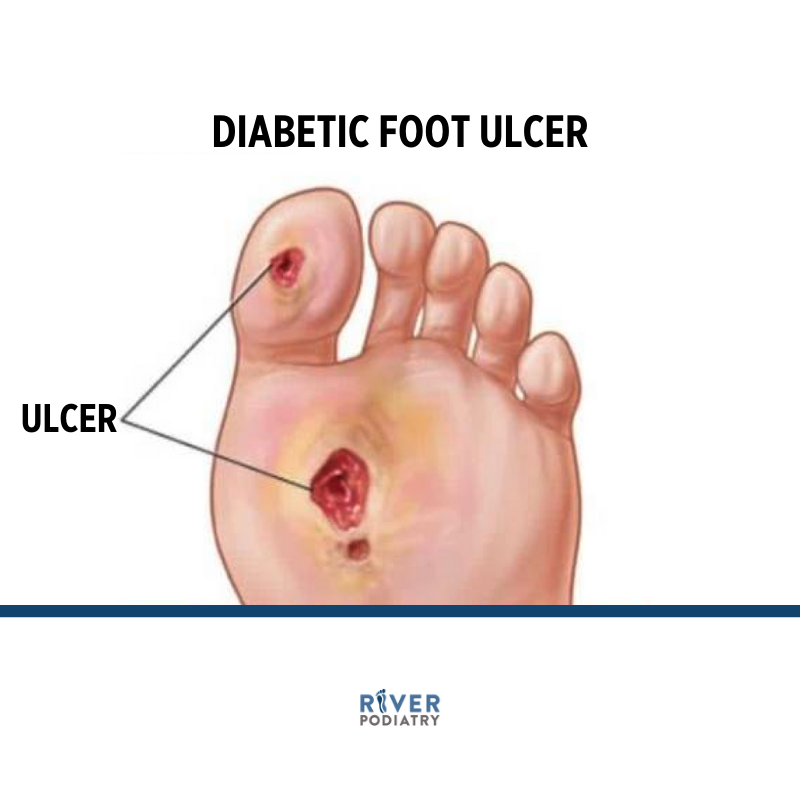Ulcers
What are they?
An ulceration is an absence of or defect in the normal lining of the skin layers (epidermis and dermis). An ulceration is a hole or cavity in the skin that may be wet, dry and very resistive to healing. Patients with diabetes, poor circulation and those that are bedridden may be prone to develop ulcerations. The symptom level, clinical appearance, and response to therapy are largely dependent upon the type and location of the ulceration and the health of patient.
What causes them?
There are many types of ulcers including those caused by loss of sensation of the skin, decreased blood flow, pressure to a specific area of the foot and ulcers due to problems with the valves in the veins.
The diabetic ulceration is caused by an unhealthy condition of the nerves, as they do not function properly and result in a loss of sensation. A diabetic patient may step on a needle or other object in the shoe and not even be aware of the problem due to reduced sensation. The skin will eventually break down and result in an ulceration.
Ischemic ulcerations are ulcers that are caused by decreased blood flow and poor blood supply to the feet due to calcified arteries or blockages of the blood vessels. These are the most painful of all types of ulcers. Since the skin is not receiving the nourishment it needs to survive from the arteries, it begins to die. This often leads to an ulceration.
A pressure ulceration is caused when a portion of the foot is left in contact with an area such as a bed mattress for an excessive period of time. This type of ulceration is commonly seen in patients that are bedridden and unable to move on their own. The pressure to the area cuts off the blood supply, which can cause tissue death leading to an ulceration.
A venous stasis ulceration occurs due to an incompetent or faulty valve between the superficial and deep veins in the legs. This results in fluid being backed up into the superficial veins. Eventually there is too much fluid in the leg. The fluid has nowhere to go and will begin to weep onto the skin, resulting in an ulceration.
How do you treat them?
There are many different treatments for ulcers and the type of ulceration involved largely determines the specific method of care. In general, ulcers are treated with removal of the surrounding tissue and any nonviable tissue. This will help relieve pressure from the ulcer. Some patients are treated with non-weight bearing of the foot to help decrease pressure on the ulcer. Topical wound gels and creams are also used to keep certain ulcers clean and hydrated and some gels even help remove dead tissue.
The treatment of ischemic ulcerations may require re-vascularization procedures by a vascular surgeon to increase the blood supply to the feet. Venous stasis ulcers are often treated with compression dressings to help squeeze the fluid out of the legs and back into circulation. These ulcers are also treated with wound gels. Appropriate ulcer therapy can be very effective but often requires time, patience and cooperation on the part of the patient.


